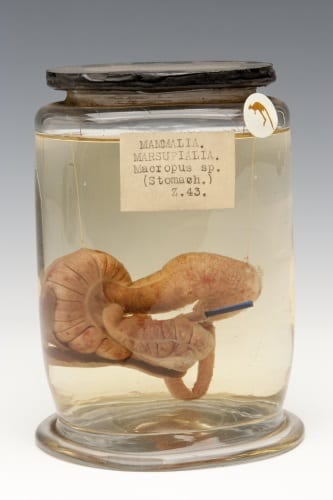Specimen of the week: Trichobezoar
By Katie Davenport-Mackey, on 29 March 2019
Our blog this week is from Subhadra Das, Curator of Science Collections at UCL Culture.
Today’s specimen of the week comes from UCL Pathology Collections. The Collections are displayed at the UCL Pathology Museum at the Royal Free Campus of the UCL Medical School in Hampstead. The museum includes a medical teaching collection of nearly 3,000 specimens of human remains illustrating the history of disease. To open up these specialist medical displays to a wider audience, we’ve developed a trail of 10 specimens of well known diseases. As the museum only opens to the public for special events, we’re sharing the trail as part of the Specimen of the Week series.
This week’s specimen is a trichobezoar — a mass of undigested hair from the stomach and large intestine of a young girl. As with most of the specimens in UCL Pathology Collections, we know little about the person the specimen comes from beyond their sex and their age, but this rare condition provides an interesting window into the practice of medicine, and its cultural significance extends into the realms of magic. (more…)
(more…)
 Close
Close


